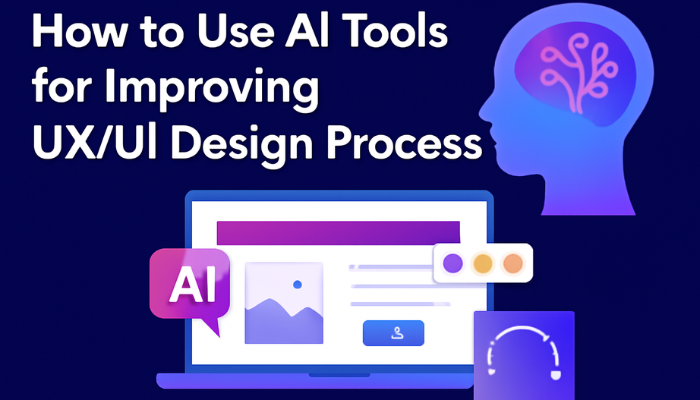The transportation and logistics sector is grappling with increasing challenges, such as rising operational costs, driver shortages, and inefficient resource allocation. On average, businesses face supply chain disruptions lasting over a month every 3.7 years, with the potential to wipe out as much as 45% of annual profits within a ten-year span.
The need for more efficient, cost-effective solutions has never been greater. This is where artificial intelligence in transportation comes in, offering transformative technologies to tackle these problems head-on.
In this blog, we explore the key ways AI is revolutionizing transportation and logistics, from predictive analytics and autonomous vehicles to warehouse automation and intelligent route optimization. You’ll also learn how various industries are applying AI to improve efficiency, customer satisfaction, and scalability.
Understanding Artificial Intelligence in Transportation and Logistics
Artificial intelligence in transportation applies advanced computational techniques to automate, predict, and optimize various logistical functions. At its core, AI involves machines simulating human intelligence to analyze data, recognize patterns, and make decisions, often at speeds and scales impossible for humans.
Several AI technologies play crucial roles in transportation and logistics:
1. Machine Learning (ML)
ML Allows systems to analyse past data and enhance the accuracy of predictions, like estimating delivery schedules or forecasting shipment volumes.. ML models identify trends and anomalies, allowing proactive decision-making to prevent disruptions.
2. Computer Vision
Utilized for real-time object recognition and inspection in warehouses and transportation hubs. It supports automated sorting, package verification, and monitoring vehicle conditions through cameras and sensors.
3. Natural Language Processing (NLP)
Powers chatbots and virtual assistants that handle customer queries, shipment tracking, and documentation, reducing the need for human intervention in communication-heavy tasks.
4. Robotics and Automation
AI-driven robots manage repetitive warehouse operations like picking, packing, and sorting, which minimizes human error and accelerates processing speed.
These technologies integrate smoothly into logistics workflows via predictive analytics, autonomous vehicles, automated warehousing, and intelligent customer service platforms. Predictive analytics, for instance, uses machine learning models to forecast demand, optimize inventory, and allocate resources efficiently. AI algorithms power autonomous vehicles like self-driving trucks and delivery drones, enabling them to navigate routes safely and manage deliveries efficiently.
This foundation of AI technologies sets the stage for significant operational transformations in transportation and logistics.
How AI is Transforming Transportation and Logistics Operations
Artificial intelligence in transportation is revolutionizing how logistics companies plan, execute, and monitor their operations. AI solutions address persistent inefficiencies by automating decision-making, predicting outcomes, and optimizing resource use.
1. AI-Driven Predictive Analytics for Demand Forecasting
AI-driven demand forecasting helps you stay ahead of market fluctuations and operational bottlenecks. By analyzing historical shipment records, seasonal trends, inventory movement, and external factors like weather or fuel costs, machine learning models generate highly accurate forecasts for shipment volumes, staffing needs, and fleet availability.
Here’s what it means for you:
- Stop reacting, start anticipating. Know when demand will spike and prepare accordingly, avoiding over- or under-utilization of resources.
- Reduce idle fleet and labor costs. Allocate drivers, vehicles, and warehouse staff based on precise volume predictions.
- Increase SLA performance. Improve delivery reliability during peak seasons without last-minute scrambling.
Example: Imagine knowing in advance when certain routes or distribution hubs will experience heavier shipment volumes. You can schedule extra vehicles, notify your warehouse teams, and adjust inventory levels before issues arise. No more last-minute scrambling when orders spike or when weather conditions threaten delivery timelines.
2. Autonomous Vehicles and Drones
AI enables autonomous trucks and drones to handle deliveries without human drivers. Self-driving vehicles use sensor data combined with AI algorithms to perceive their environment, make navigation decisions, and avoid obstacles.
Here’s what it means for you:
- Reduce reliance on human drivers, addressing labor shortages and minimizing risks related to fatigue. Increase delivery frequency by operating vehicles 24/7, shortening transit times and meeting tight deadlines more consistently.
- Improve last-mile delivery speed and flexibility with AI-powered drones that adapt flight paths in real time to changing weather and obstacles.
Example: Imagine your fleet running autonomously overnight, completing deliveries that would otherwise require multiple shifts of drivers. Meanwhile, drones cover hard-to-reach areas quickly, ensuring customers receive packages faster and with fewer delays.
3. Intelligent Route Optimization
Route planning traditionally relies on static maps and manual inputs, often failing to account for real-time traffic, weather disruptions, or delivery priorities. AI-powered route optimization uses advanced algorithms such as genetic algorithms and reinforcement learning to dynamically determine the most efficient routes.
Here’s what it means for you:
- Cut fuel expenses and reduce travel times by selecting routes that adapt continuously to road conditions. Lower your carbon footprint while improving cost control.
- Deliver with greater accuracy by providing reliable delivery windows, boosting customer satisfaction and retention.
Example: Imagine your trucks automatically rerouting around traffic jams or accidents, arriving on time without driver intervention. Customers get precise delivery estimates, enhancing their trust in your service.
4. Warehouse Automation and Robotics
Modern warehouses integrate AI-powered robots with warehouse management systems (WMS) to automate picking, packing, and sorting processes. Computer vision and AI allow robots to identify items accurately, manage inventory placement, and optimize workflow sequences.
Here’s what it means for you:
- Reduce human errors and speed up order processing, especially during demand surges. Scale operations without a proportional increase in labor costs.
- Enhance workplace safety by minimizing manual handling and repetitive tasks.
Example: Picture robots quickly locating and sorting thousands of items during peak season, ensuring orders ship accurately and on time while your staff focuses on value-added tasks like quality checks.
5. AI-Powered Customer Experience and Support
AI chatbots and virtual assistants provide real-time shipment tracking and customer support, handling inquiries without manual intervention. NLP algorithms understand customer requests and deliver precise updates or resolve common issues autonomously.
Here’s what it means for you:
- Reduce the workload for your customer service teams by automating routine queries and updates. Increase transparency by keeping customers informed proactively.
- Boost customer satisfaction and loyalty through timely notifications about delays, shipment status, and delivery confirmations.
Example: Imagine customers receiving instant answers about their order status any time of day, reducing calls to your support center and improving their overall experience with your brand.
6. Risk Detection and Security Enhancements
Transportation logistics face risks from theft, fraud, and cybersecurity threats. AI systems analyze transactional and sensor data to detect anomalies indicative of fraudulent activity or shipment tampering. Additionally, AI-driven cybersecurity tools monitor network activity to prevent data breaches that could compromise sensitive logistics information. Early detection through AI reduces financial losses and protects supply chain integrity.
Here’s what it means for you:
- Identify and mitigate risks early, protecting your shipments and financial assets.
- Strengthen data security to maintain compliance and trust with partners and customers.
- Prevent costly disruptions by detecting threats before they escalate.
Example: Imagine an AI system alerting you instantly when suspicious activity is detected in a shipment’s route or your IT network, enabling you to act quickly and safeguard your operations.
7. Inventory Management Optimization
AI-powered inventory management analyzes stock levels, order history, and demand fluctuations to maintain optimal inventory across warehouses and distribution centers. This reduces overstock and stockouts, balancing supply with customer demand.
Here’s what it means for you:
- Minimize holding costs by avoiding excess inventory while ensuring you have enough stock to meet customer needs.
- Improve cash flow by aligning purchasing decisions with real-time demand insights.
Example: Imagine your system automatically replenishing popular items before they run low, preventing lost sales and expensive rush orders.
8. Dynamic Pricing and Freight Cost Optimization
AI models evaluate market demand, fuel prices, competitor rates, and shipment urgency to dynamically adjust freight pricing. This helps logistics providers maximize profitability and offer competitive quotes.
Here’s what it means for you:
- Optimize your freight charges based on real-time market conditions, increasing revenue without losing customers.
- Respond quickly to cost changes to maintain healthy margins.
Example: Imagine your pricing automatically adjusting during peak seasons or fuel price spikes, ensuring you stay competitive and profitable.
9. Capacity Planning and Fleet Management
AI helps predict equipment utilization, maintenance needs, and driver availability, allowing logistics managers to allocate fleet resources effectively. This optimizes vehicle use and minimizes downtime.
Here’s what it means for you:
- Avoid costly underutilization or overuse of vehicles.
- Schedule maintenance proactively to prevent unexpected breakdowns and service interruptions.
Example: Imagine AI recommending optimal vehicle deployment across routes and alerting you before a truck needs servicing, keeping your fleet running smoothly.
10. Supply Chain Visibility and Exception Management
AI provides end-to-end visibility into supply chains by analyzing real-time data from shipments, sensors, and partners. It detects deviations from plans and triggers alerts for potential delays or issues.
Here’s what it means for you:
- Gain immediate insight into shipment status, enabling faster response to disruptions.
- Reduce delays and improve communication with customers and stakeholders.
Example: Imagine getting early warnings if a shipment is delayed by customs or weather, allowing you to reroute or inform customers before problems escalate.
As AI continues to transform transportation, it brings tangible business advantages that companies can’t afford to overlook.
Business Benefits of Implementing AI in Transportation
Artificial intelligence in transportation delivers measurable improvements across logistics operations, directly addressing key business challenges such as rising costs, delivery delays, and operational inefficiencies. Companies adopting AI technologies see concrete results that justify investment and drive competitive advantage.
1. Cut Your Costs
AI helps you save money by optimizing routes and managing your fleet more efficiently. With smart route planning, you cut down on fuel use and unnecessary mileage. Predictive maintenance alerts you before a vehicle breaks down, avoiding costly downtime. Plus, automating warehouse tasks and paperwork reduces labor expenses and cuts mistakes that can cost you big.
For example, predictive maintenance powered by AI forecasts vehicle breakdowns before they occur, avoiding expensive downtime.
2. Speed Up Deliveries
Meeting customer expectations means faster, more reliable deliveries. AI analyzes live traffic and weather conditions so you can reroute shipments instantly, avoiding delays. This means you hit your delivery windows more consistently and keep your inventory balanced—no more running out or sitting on excess stock.
3. Scale Your Operations with Ease
Whether demand spikes seasonally or you’re growing fast, AI lets you adapt without adding huge overhead. Automating routine decisions and continuously monitoring your supply chain means you can respond quickly to changes, keeping your business flexible and ready for whatever comes next.
4. Make Smarter Decisions with Data
Data-driven insights form the backbone of smarter decision-making. You’re sitting on a mountain of data, but AI turns that into clear insights. It highlights patterns and inefficiencies you might miss, helping you use your assets better, manage your workforce smarter, and deliver great customer service. With AI, your decisions are backed by data, not guesswork.
With these clear business benefits, the next question is how a technology partner like Codewave can guide your transportation business through AI transformation.
Challenges of Implementing Artificial Intelligence in Transportation
Adopting artificial intelligence in transportation offers tremendous benefits, but implementing these advanced systems is not without its hurdles. Understanding these challenges upfront prepares you to tackle them effectively and maximize ROI.
1. Data Quality and Integration Issues
AI relies heavily on high-quality, real-time data from multiple sources such as GPS, IoT sensors, and supply chain management systems. Many transportation companies face fragmented data silos and inconsistent data formats, which hinder AI model accuracy and performance.
Solution: Without clean and integrated data, AI predictions become unreliable, leading to poor decisions on route optimization, fleet management, and demand forecasting. Investing in proper data governance and integration frameworks early on is essential.
2. Legacy Infrastructure Compatibility
Many logistics operators work with outdated hardware and software systems that are not designed for AI workloads. Integrating AI solutions with these legacy systems can cause delays and operational disruptions.
Solution: Incompatible infrastructure limits your ability to deploy AI at scale or in real-time, reducing potential benefits. A phased upgrade strategy combined with middleware solutions can enable smoother AI adoption.
3. Skilled Talent Shortage
Developing, implementing, and maintaining AI-powered transportation systems requires expertise in machine learning, data science, and logistics domain knowledge. Finding and retaining this talent is a significant barrier for many firms.
Solution: Without in-house AI expertise, your projects risk delays, poor model performance, or costly vendor dependence. Consider partnering with experienced AI technology providers who bring cross-domain expertise.
4. Change Management and Cultural Resistance
Introducing AI-driven automation changes how your teams operate daily. Resistance from employees due to fear of job loss, unfamiliarity with technology, or workflow disruption can stall AI projects.
Solution: Lack of buy-in slows down adoption and reduces AI’s impact. Transparent communication, training programs, and involving staff early in the AI journey help build trust and acceptance.
5. High Initial Investment and ROI Uncertainty
AI projects often require substantial upfront investments in software, hardware, and change management. Measuring tangible ROI can be challenging, especially during pilot phases.
Solution: Without clear KPIs and phased rollout plans, decision-makers may hesitate, stalling innovation. Establishing pilot projects with defined success metrics helps justify ongoing investment.
Now that you have understood the challenges and how to tackle them, it’s time to understand common mistakes and how to avoid them.
Common Mistakes to Avoid in AI Adoption for Transportation
Even with the best intentions, some missteps can diminish AI’s impact in transportation operations. Avoiding these common pitfalls will ensure you realize AI’s full potential.
1. Mistake 1: Treating AI as a Standalone Solution
AI works best when integrated into your broader logistics ecosystem, connecting fleet management, warehouse operations, and customer service platforms. Treating AI as a separate “add-on” limits data flow and decision-making.
Pro Tip: Prioritize solutions that offer API integrations and centralized data management.
2. Mistake 2: Neglecting Continuous Model Training and Validation
AI models degrade over time if not retrained with fresh data reflecting changing conditions like traffic patterns or market shifts. Ignoring this leads to inaccurate forecasts and routing.
Pro Tip: Implement ongoing model monitoring and automatic retraining processes.
3. Mistake 3: Overlooking Ethical and Compliance Considerations
AI can inadvertently introduce bias in routing priorities or workforce management decisions. Additionally, strict regulations govern data privacy, especially with GPS and customer information.
Pro Tip: Adopt transparent AI practices, conduct bias audits, and ensure compliance with data protection laws.
4. Mistake 4: Underestimating Change Impact on Workforce
AI might automate tasks but often requires new skills from your workforce, such as interpreting AI-driven insights or managing exceptions.
Pro Tip: Invest in reskilling and maintain a human-in-the-loop approach to complement AI.
Now that you know what to avoid, see how Codewave’s expertise can guide your transportation business toward AI-powered success.
How Codewave Can Help Transform Your Transportation and Logistics Business with AI
Codewave brings deep expertise in artificial intelligence in transportation, combining domain knowledge with advanced technology capabilities to deliver scalable, high-impact solutions.
Key services relevant to transportation and logistics include:
- AI Strategy Consulting: Align AI initiatives with your business goals, identify priority areas, and design implementation roadmaps.
- GenAI Development: Build generative AI models for content automation, intelligent documentation, and customer interactions.
- IoT Development: Integrate sensor networks for real-time fleet tracking, environmental monitoring, and asset management.
- Automation Testing: Ensure software reliability and security through comprehensive automated testing frameworks.
Codewave develops logistics software that reduces delivery costs by 25% and increases fleet utilization by 30% by integrating AI with IoT sensors and custom software. If you’re ready to explore how artificial intelligence in transportation can redefine your logistics operations, connect with Codewave for a consultation.
Codewave is a UX first design thinking & digital transformation services company, designing & engineering innovative mobile apps, cloud, & edge solutions.







